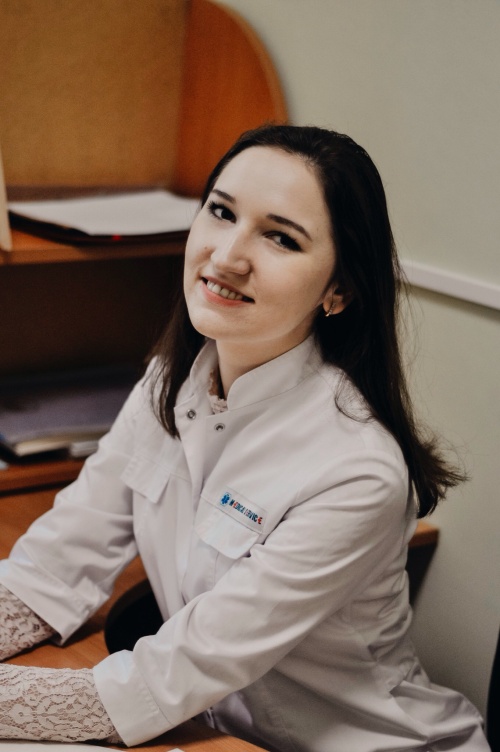Cherkasova, A.N.

Postgraduate Student, the Department of Neuro- and Pathopsychology, Faculty of Psychology, Lomonosov Moscow State University; Junior Researcher, Institute of Neurorehabilitation and Recovery Technologies, Research Centre of Neurology.
-
Testing a Set of fMRI Paradigms to Detect the “Covert Cognition” Phenomenon on a Sample of Healthy VolunteersLomonosov Psychology Journal, 2024, 2. p. 219-242Cherkasova, A.N., Yatsko, K.A. , Kovyazina, M.S. , Varako, N.A., Kremneva, E.I., Krotenkova, M.V., Ryabinkina, Yu.V., Suponeva, N.A., Piradov, M.A.read more1678
-
Background. The authors developed a specialized set of functional magnetic resonance imaging paradigms, based on data from general psychology, neuropsychology and previous studies, to diagnose the “covert cognition” phenomenon on a Russian-speaking sample of patients with chronic disorders of consciousness. Before using this set with patients, it is advisable to carry out testing on a group of healthy people with preserved consciousness in order to detect significant clusters of activation corresponding to paradigms and to assess their reproducibility at the individual level.
Objectives. The study is aimed at testing the proposed set of fMRI paradigms in order to detect the “covert cognition” phenomenon on a sample of healthy volunteers.
Study Participants. Sample included 10 healthy volunteers (3 men, 7 women, M = 44 years, SD = 17).
Methods. The study was performed on a magnetic resonance imaging scanner “Magnetom Verio”, “Siemens” with a magnetic field strength of 3 Tesla. The hierarchical set of nine passive and three active paradigms was presented to participants. Statistical analysis was carried out using SPM12.
Results. As a result of group analysis, significant clusters of activation were observed in six passive paradigms, covering the perception of tactile (“writing” a letter on the abdomen), auditory non-speech (alarm clock, two musical fragments without words) and speech stimuli. Auditory speech paradigms (audio fragment from the film with obscene language, testee`s name within the “cocktail party” effect) were the most reproducible paradigms at the individual level.
Conclusions. The obtained results allow us to apply the proven paradigms in further studies to detecting the “covert cognition” phenomenon on a Russianspeaking sample of patients with chronic disorders of consciousness. Data on brain activation in healthy volunteers in different paradigms enriches theoretical understanding of cerebral organization of cognitive functions.
Keywords: neuropsychology; consciousness; prolonged disorders of consciousness; “covert cognition”; functional magnetic resonance imaging DOI: 10.11621/LPJ-24-22
-
-
Recovery of consciousness: opportunities for neuropsychological assessment and rehabilitationLomonosov Psychology Journal, 2021, 3. p. 102-128Fufaeva Ekaterina V., Mikadze Yuri V., Cherkasova, A.N., Kovyazina, M.S. , Baulina Maria E., Varako, N.A., Skvortsov, A.A., Zinchenko, Yu.P.read more3719
-
Relevance. Neuropsychological rehabilitation and assessment are the priority tasks in practice of a clinical psychologist. The modern rehabilitation system can be considered as a partnership between patients, their families and different specialists participating in the rehabilitation process. The existing approaches to neurorehabilitation are aimed at the earliest possible intervention. It`s of particular importance for patients with disorders of consciousness, whose number has been increasing in connection with the development of medicine in recent decades. This leads to the need to develop tools for specialized neuropsychological assessment and methods of neuropsychological rehabilitation of patients in the early stages of recovery of consciousness.
Objective. To summarize neuropsychological diagnostic and rehabilitation experience of working with patients with disorders of consciousness after brain lesions.
Methods. We analyze practical guidelines, applied research and our own hands-on experience of working with patients with disorders of consciousness after brain lesions.
Results. Based on the analysis, the recommended diagnostic tools are formulated that can be used to identify the current level of consciousness and to assess various parameters of psychic activity of patients with disorders of consciousness. In addition, the main directions and neuropsychological methods of rehabilitation work recommended for recovery of consciousness and continuing to be developed now are highlighted.
Conclusion. A new diagnostic and rehabilitation material is presented, which is recommended for use in neuropsychological practice by practicing clinical psychologists with patients with disorders of consciousness after brain lesions.
Acknowledgments: we would like to express our great appreciation to Professor Galina Ivanova, also Valentina Bykova and Olga Maksakova for comments that greatly improved the manuscript.
Keywords: clinical psychology; neuropsychology; disorders of consciousness; neuropsychological assessment; neuropsychological rehabilitation DOI: 10.11621/vsp.2021.03.06
-









